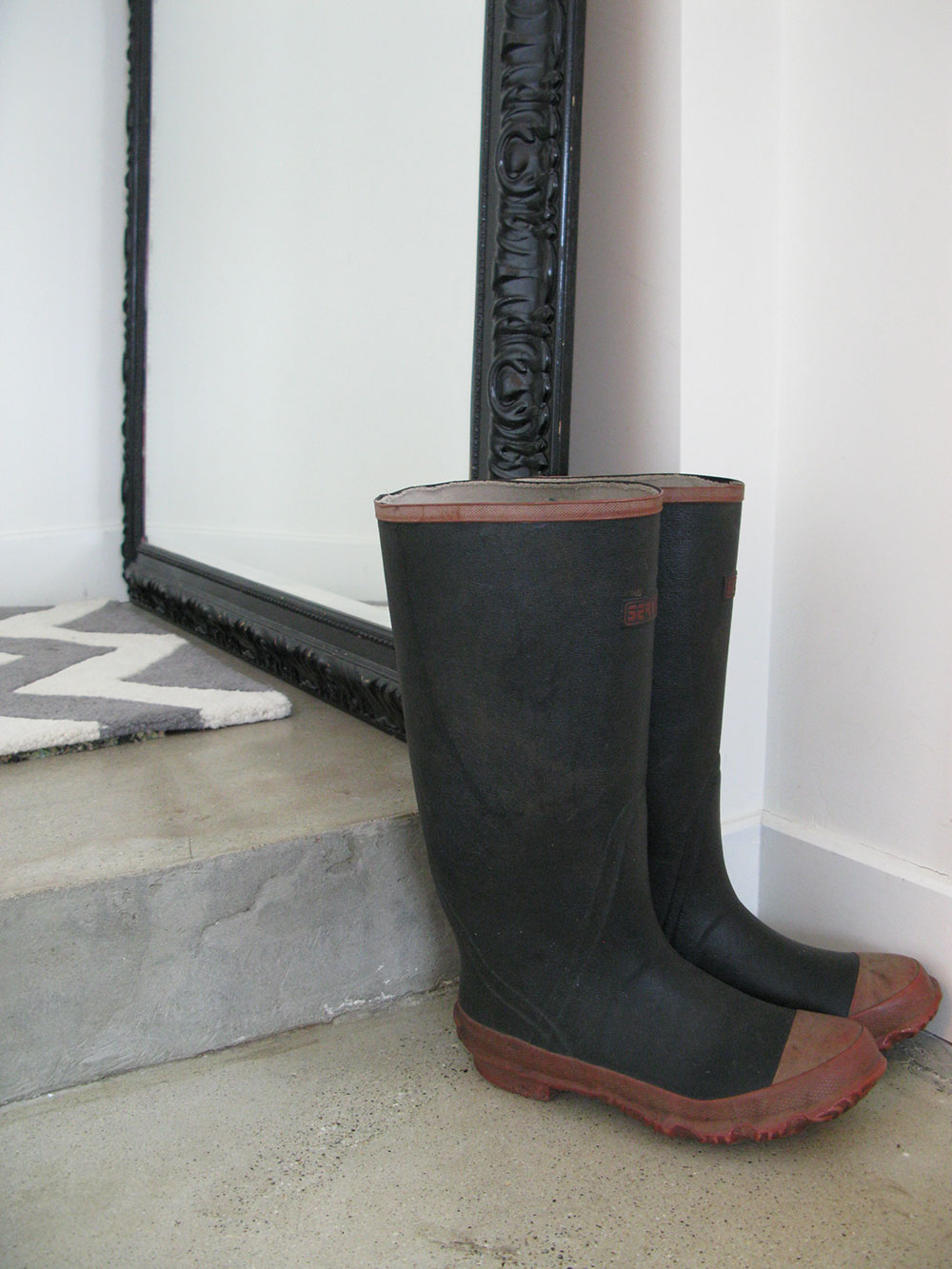I spoke with Ryan Drum today about his legendary Fucus knee treatment. The one where you walk around in over-sized boots filled with seaweed sludge for four hours a day for a YEAR? Yeah, that one.
My knee has been bothering me more since Lyme disease, the same one I tore the meniscus in, skiing decades ago. I never had surgery and want to avoid it, but it gets really painful during cold fronts, and I hear rubbing and popping every time I crouch down.
So, he called, since I ordered seaweed and some other herbs, but I didn’t send a check with the order and had written a handful of questions about the knee treatment. Here’s what he said (paraphrased):
You know, you probably could do the treatment without buying gourmet-grade seaweed harvested in BC. You can get it as veterinary kelp or “egg kelp” for about $1/lb. It should be in small pieces, not powder. The pieces are easier to use, and don’t make a slurry that is too thick. You want it thick but not a paste. The seaweed should be a fresh green-brown, sort of drab color, not dark brown. Brown means it has oxidized.
Get yourself a pair of charity shop boots, since you’ll demolish them with the treatment. You want them to be big, so you can fit 1 quart of the slurry inside. You want to have constant contact, a minimum of 4 hours/day, because then you force the skin to take it in. The skin is working all the time, making decisions about what to take in and what to excrete. Primarily, it excretes. But the skin will take substances in, as we see in Mercury poisoning – this happens because the skin is aggressively eating it. But you want to make sure there is absorption. The big boot also acts as a cushioning and a therapeutic armor around the lower foot.
You want to keep it warm, like with a heating pad (electric) or a hot bad. Do not burn yourself by overheating the slurry. Just warm is good. You can get really chilled from standing in wet seaweed for most of a cold day.
Ryan also suggested I see a physiotherapist that would take a video of me walking and analyze if I’m favoring, which he said can do more damage than not, and should be corrected.
I asked him if I should do both legs and he quipped that the other one would get jealous, or I’d be like a peg-leg walking around afterward – and when was the last time I saw a peg-legged woman? He was so jovial and chipper, and managed the whole call very efficiently but without making me feel he was rushing.
We talked a little about Fukushima. He said they are still harvesting, or will start for this year in about a month (April), and expect to see the first atomic nuclides in the water in mid to late 2014. He said it takes time for it to move across. So the seaweed collected recently and now will be relatively unaffected by that disaster, and he and BC Kelp (run by his apprentice and her husband and supported by the BC government in terms of land tracts used for sustainable seaweed harvest) have still been gathering in season.
Two sources of the kelp are
Seven Springs Farm and Acadian Sea Vegetables or Sea Plants, at specialty garden supply stores, in 25-50 lb bags. He indicated that a holistic veterinary may be a good source of kelp, and mentioned that Larch Hansen may have farm or garden grade kelp too, his contact info is at the end of the
sea weed paper. Ryan suggested that I could also go and gather, at low tide up by Ipswich to harvest wet raw Rockweed, which is in the Fucus Family (Ascophyllum, only member of its genus), and use that.
From Ryan Drum’s seaweed paper on his site:
“My personal and professional rules for seaweed harvest are very basic: chose the cleanest waters you can find and verify by talking to locals and calling ecology and health agencies before harvesting sea vegetables. Cut the seaweeds from rocks using stainless steel scissors, leaving the holdfasts and some plant material for regrowth; each specific seaweed has its own special harvest and processing requirements (see Lewallen and McConnaughey). Harvest only what you will actually be able to process and use; try harvesting on cloudy cool days at low tide when the individual plants are not heat or drying-stressed, which means they will transport better and tend to yield a much tastier product.
I try to dry my seaweeds outside in the full sun for 4-10 hours all in one day; if this is not possible, I dry them, or finish drying them, inside at 80-100 degrees F using wood heat and small muffin fans for air circulation. I place them in airtight opaque containers immediately after they are totally dried.”
So, that’s what I’m going to do. I was thinking it would be good to get x-rays to have as a baseline. I’ll plan to update this in a year. Watch for the lady squishing around Lincoln in some big old boots, shivering!

boots for Fucus slurry treatment

